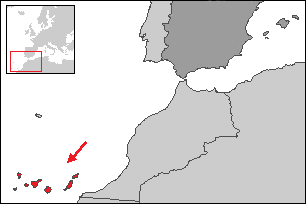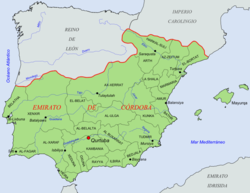Carolus I said:
It worked on many levels for sure. Surely not in just one way. What you mentioned was the case. But for example compulsory school education in German language as well. And other factors. Here is the number of Lithuanian-speakers living in East Prussia as percent of the total population of East Prussia:
1708 - 143,000 (21,15%)
1740 - 73,500 (12,25%)
1820 - 200,000 (18,52%)
1848 - 150,580 (10,26%)
1871 - 139,450 (7,65%)
1878 - 131,415 (6,91%)
1890 - 121,345 (6,19%)
Estimates for 1708 and 1740 are from a German website
www.prussen.org and number for 1820 is from a Polish 1825 book by Stanisław Plater (1784-1851).
The decline of the % of Lithuanians after 1708 was caused by the plague in East Prussia in 1709 - 1711 (see:
Great Northern War plague outbreak). It affected ethnic Lithuanians more than all other ethnic groups in East Prussia, because it swept mostly through north-eastern regions of the province, where Lithuanians were the majority. After 1740 there was a recovery in % of Lithuanian population, due to natural increase and immigration of new Lithuanians from the east.
Lithuania Minor (Prussian Lithuania) is as important for Lithuanian history, as Lower Silesia is for Polish history.
First book in Polish language was printed in Lower Silesia; first book in Lithuanian language was published in Prussian Lithuania.
Here some information about the end of Lithuanian culture in East Prussia, from a Lithuanian website:
(...) they [the Lithuanians of East Prussia] preserved their language, customs, Lithuanian way of life, and worldview and created a distinctive culture which exerted a vitalizing influence on the neighboring culture of Lithuania Major. Lithuania Minor saw the appearance of the first Lithuanian language book, the Catechism of M. Mažvydas, in 1547; the Bible was translated into Lithuanian by Bretkūnas in 1579–90; the first Lithuanian grammar was written by D. Klein in 1653. During the 17th century Lithuanian life, customs, and beliefs were extensively described by E. Wagner, M. Pretorius, K. Hartknoch, and T. Lepner, and in the 18th century the first classic of Lithuanian literature was created: the poem "Metai" ("The Year") by K. Donelaitis. However, after the great plague of 1709–11 the German colonization of Lithuania Minor began. About 23,000 colonists, mostly German farmers, moved into Lithuanian territory in 1710–36. The rights and freedoms of Lithuanians were gradually restricted; their culture was driven out of public life. In 1872–76 the use of the Lithuanian language was prohibited in schools and in all state institutions. The policy of Germanizing this territory achieved its goal: in 1736 Lithuanians still made up about 80 percent of the total population in the districts of Klaipėda, Tilžė, Ragainė, Įsrutis, and Labguva; and in 1900 – only about 20 percent. In the 20th century, the open persecution of the Lietuvininkai and the destruction of their culture began in 1933 with the accession to power of the Nazis, and the final, fatal blow was delivered by World War II and the postwar Soviet occupation. Almost all of the Lietuvininkai were then scattered over Europe and the expanses of Siberia; their territory was settled by new colonists from the Soviet Union. (...)
The historical region of Lithuania Minor corresponds roughly to the modern day Kaliningrad Oblast - with the exception of its western part.
=======================================
In year 1525 after the secularization, the Duchy of Prussia as a vassal state of Poland, under the reign of Duke Albrecht von Brandenburg-Ansbach (former GM of the Teutonic Order), was created. The Duchy consisted of the Prussian part of the former Teutonic Order's State (in its post-1466 borders) and had an area of ca. 32,000 sq km. Almost 80% of its area was covered by forests, lakes, rivers and swamps. The Duchy was sparsely populated, partially due to Polish-Teutonic wars which had devastated it during the 15th century (in year 1400 the area of the future Duchy was inhabited by some 270,000 - 300,000 people but by 1466 that number declined to 150,000; by years 1500 - 1510 the population increased to roughly 180,000 - 215,000 depending on estimate).
Duke Albrecht von Brandenburg-Ansbach (also known as Hohenzollern) immediately in 1525 started a large colonizing action, inviting foreign settlers - mostly from Poland and from Lithuania (settlers from Poland had already lived in East Prussia before, but now he invited more of them). Only in period 1525 - 1568 as many as 293 new settlements - populated by Polish immigrants - were established in the region of Masuria. Already before that, in years 1519 - 1521, about 4000 peasants from the Netherlands were invited to the war-devastated region of Pomezania. Just in years 1555 - 1565 in the area of Insterburg (nowadays Chernyakhovsk) the number of villages increased from 171 to 411, as the result of colonization by immigrants from Lithuania. By 1540 most of the population of the new Duchy of Prussia - regardless of ethnicity (Old Prussian, German, Polish or Lithuanian, etc.) - converted to Lutheranism. Population of the duchy increased to some 360,000 by year 1626 (and if including also the Polish-held since 1466 region of Warmia, then 450,000) and around 500,000 people by year 1655.
According to estimates by Klaus-Peter Jurkat (author of
www.prussen.org) ethnic composition of the Duchy of Prussia in 1708 was:
- est. 675,836; incl. 228,743 Prussians; 166,312 Germans; 142,972 Lithuanians; 127,210 Poles; 10,599 others (incl. Dutch, Scots, French, etc.).
However, I'm not sure if it is possible that the number of Prussian-speakers in 1708 was still as high as almost 229 thousand.
More likely, this refers to all people with mostly Prussian ancestry - both those still speaking Prussian, and those already assimilated into other groups.
Most of Old Prussians were assimilated perhaps into Germans and Poles. Assimilation of Prussians into Lithuanians also took place, but perhaps to a lesser extent due to smaller number of Prussian population (in fact of any population - those areas were sparsely populated) in territories colonized by Lithuanians.






 . His ancestors - the Nowowiejscy - lived in East Prussia at least since the 17th century (first mentioned in sources). He composed music to "Rota" in 1910:
. His ancestors - the Nowowiejscy - lived in East Prussia at least since the 17th century (first mentioned in sources). He composed music to "Rota" in 1910:











